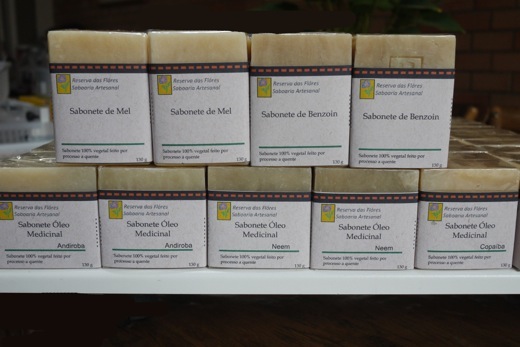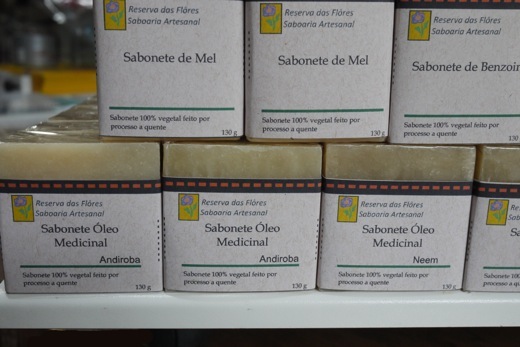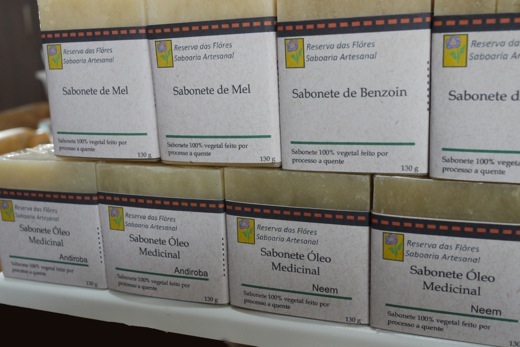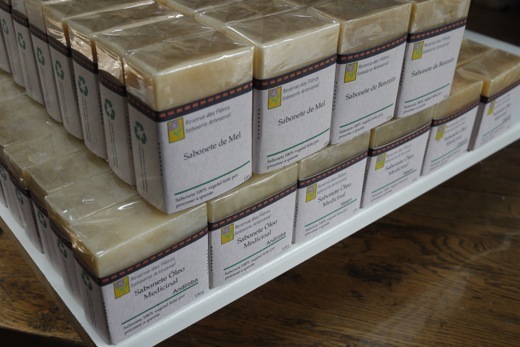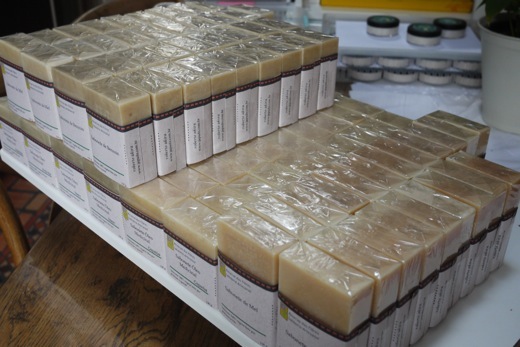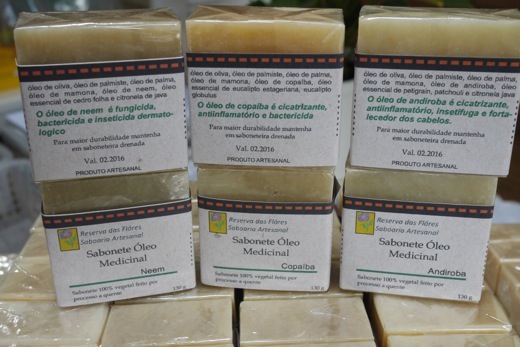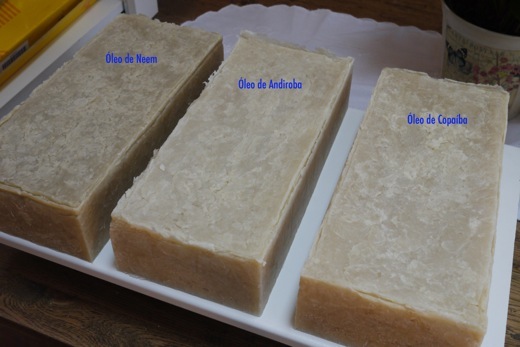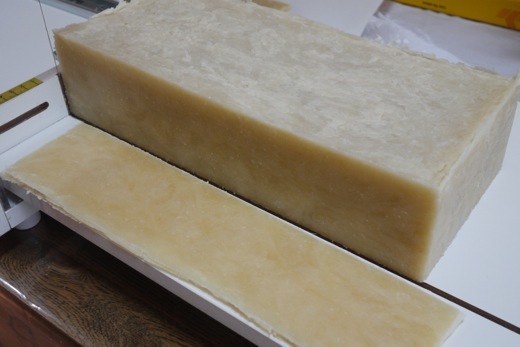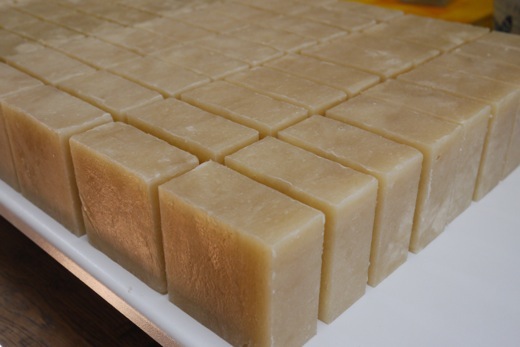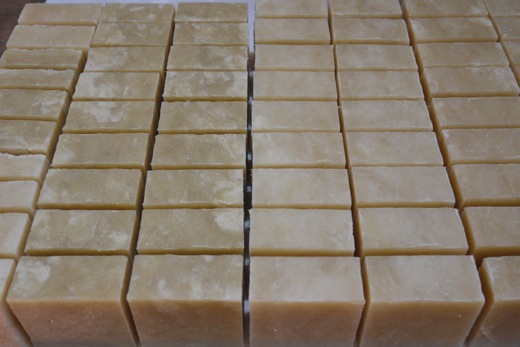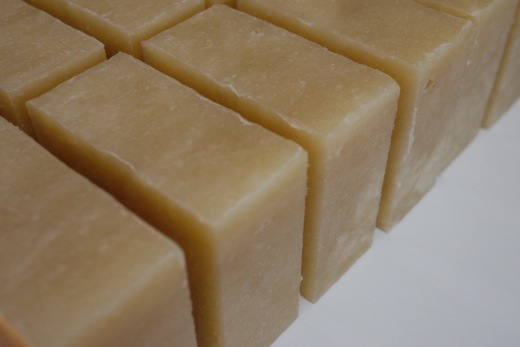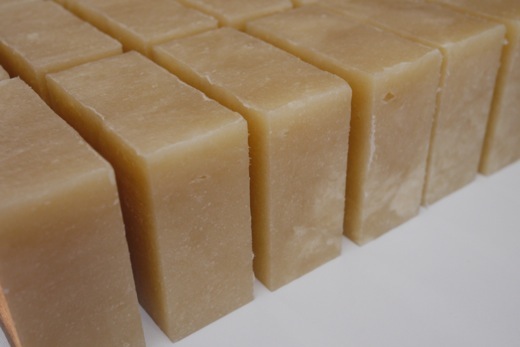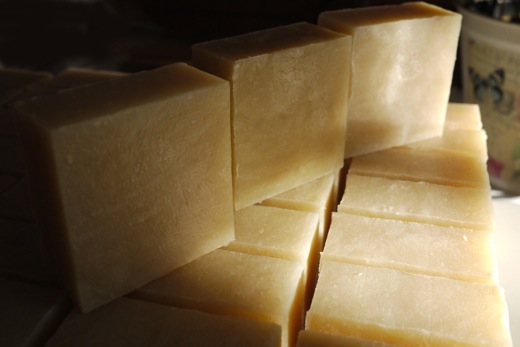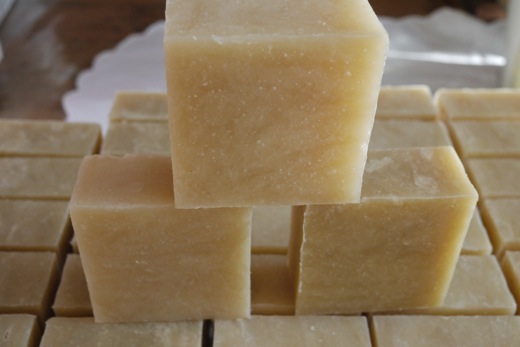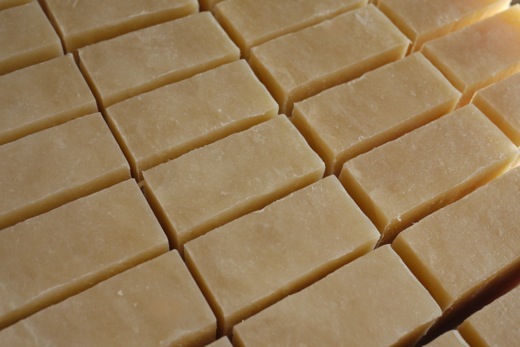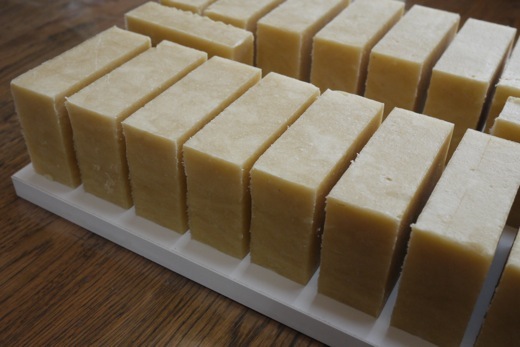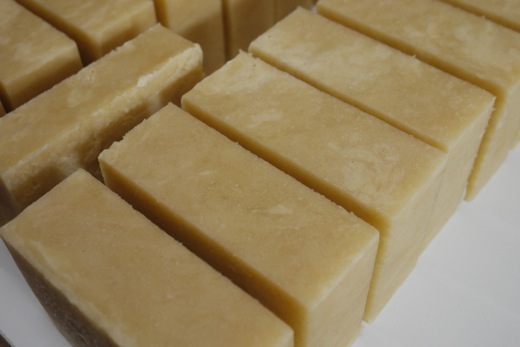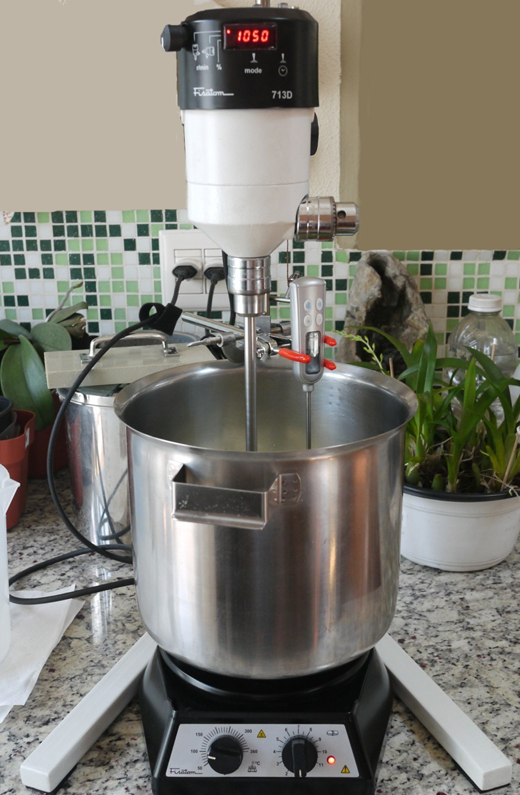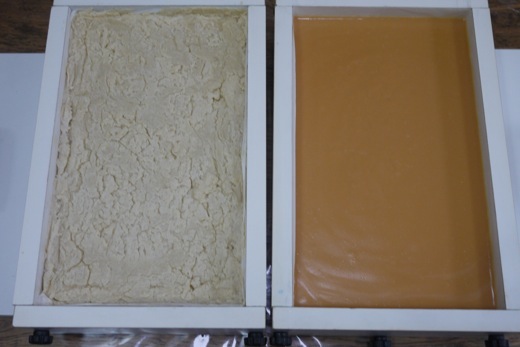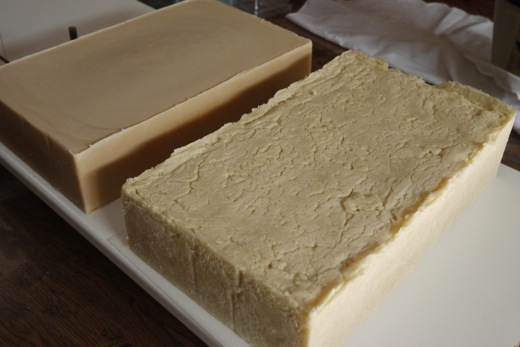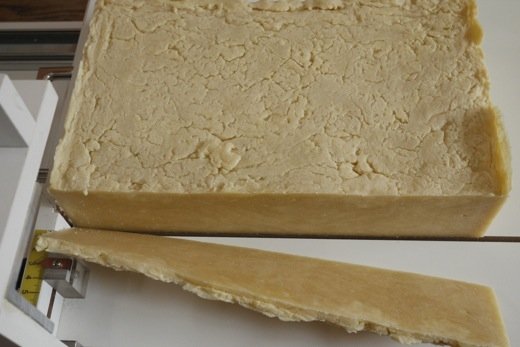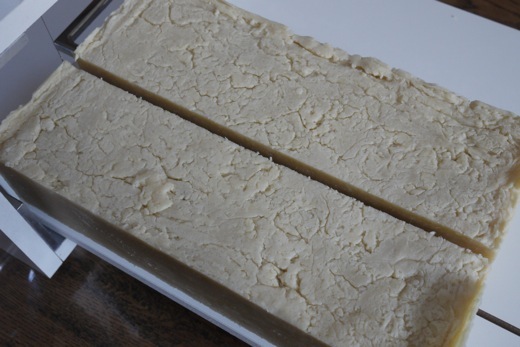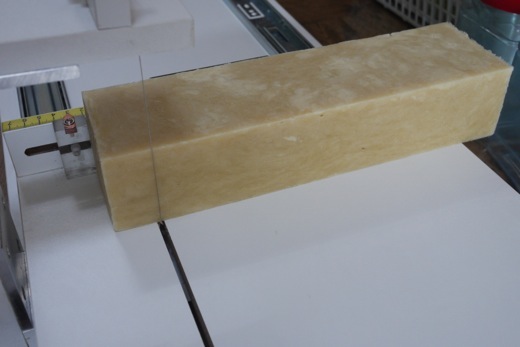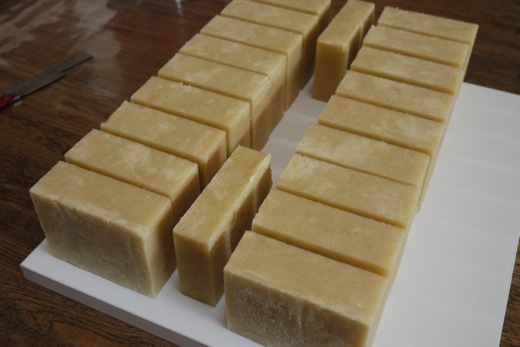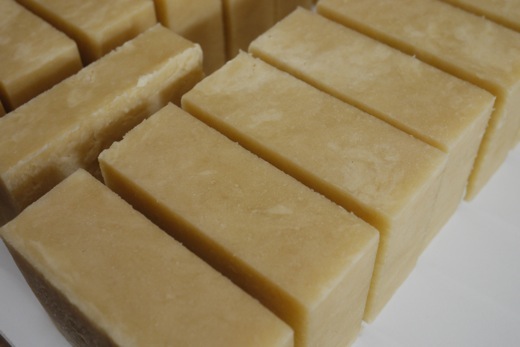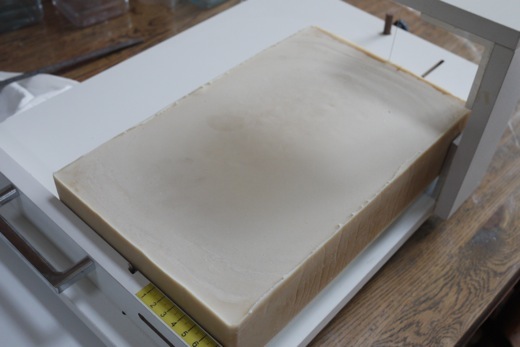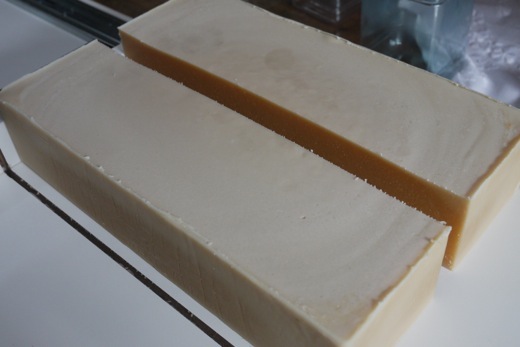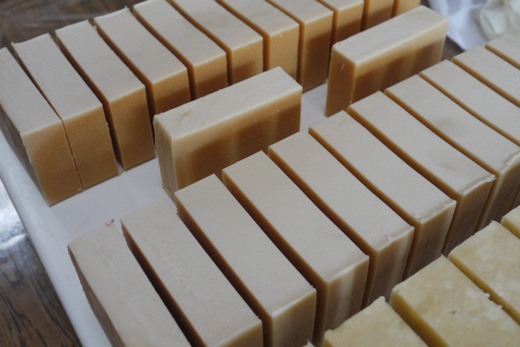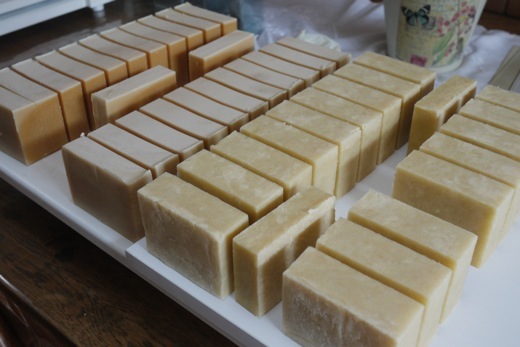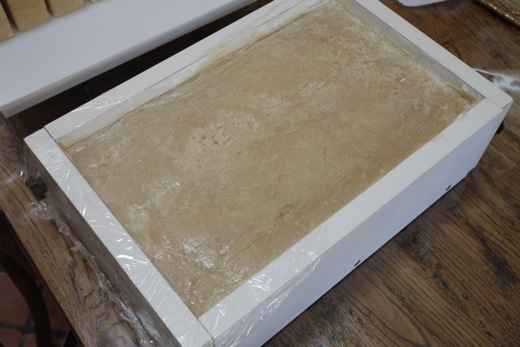Arquivos da Categoria: hot process continuous stirring
Healing soaps – neem, andiroba and copaíba oils
The cold saponification, the cold process, is a simple and easy way to make soap, but it has its drawbacks. The incorporation of the additives, flavorings and active can only be done in the presence of caustic soda, i.e., all these components are present in the reaction environment of saponification of oils. This environment of strong alkalinity spares almost nothing, literally destroys many active principles of many components.
There is a mistaken belief that the addition of the active at trace preserves this active from lye attack because in most trace lye has been consumed. Cheating in trace only about 10% of lye was consumed to form the emulsion (trace), the rest is still there and will react the same way. The concept of superfatting (SF) is also mistaken when they think that particular oil usually a noble oil will stay intact inside the soap. What happens if there is an excess of oil (or lye reducyion) which is the end of the saponification will be a mixture of oils that are part of the composition of oils of the formula and not the one that was added in the given trace.

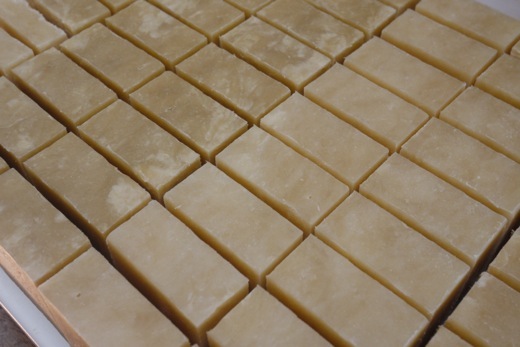 Thus is pretty pointless proclaim certain sayings of effectiveness, for example, therapeutic soaps made with medicinal oils like Neem oil made by cold process. Components of Neem after saponification not already exists, will exist sodium salts of palmitic, stearic, oleic and linoleic fatty acid, almost invariable composition of vegetable oils. One might argue, for example in this case Neem that certain components do not react with soda and remain intact but it lacks scientific evidence, whether because the unsaponifiable Neem is zero.
Thus is pretty pointless proclaim certain sayings of effectiveness, for example, therapeutic soaps made with medicinal oils like Neem oil made by cold process. Components of Neem after saponification not already exists, will exist sodium salts of palmitic, stearic, oleic and linoleic fatty acid, almost invariable composition of vegetable oils. One might argue, for example in this case Neem that certain components do not react with soda and remain intact but it lacks scientific evidence, whether because the unsaponifiable Neem is zero.
The best way in such cases is to change the process of cold process for hot process. In the hot process of adding assets is made at the end of the hot saponification which fully preserves the components.
That’s what was done with these three healing soaps with medicated oils – Neem (Azadirachta indica), Andiroba (carapa guianensis, Meliaceae) and Copaíba (Copaifera spp., Leguminosas)
The basic formula is: olive / palm kernel / palm / castor – 45/25/25/5 a zero SF, lye concentration of 30% and 7% o/o of medicinal oils. Aroma, Neem – leaf cedar and citronella, Andiroba – citronella, patchouli and petigrain and Copaiba – estageriana Eucalyptus globulus and Eucalyptus
The therapeutic properties of these oils are: Neeem oil – antifungus, antibacterial, antiviral and dermatological insecticide
Andiroba oil – anti-inflammatory, healing and antibugs, strengthener of the hair Copaiba Resin Oil – anti-inflammatory, healing, antibacterial
The process used was the Hot Process with Continuous Stirring – HPCS.
Cutting benzoim soap made by Hot Process Continuous Stirring
Here the video that shows how the benzoim soap was cut. Soap made by Hot Process Continuous Stirring – HPCS:
Hot Process Continuous Stirring – HPCS
In the small town of Fontevraud L’Abbaye in the Loire Valley in France, since 1974 there is a renowned handmade soapmaker, Savonnerie Martin de Candre. Since its founding 40 years, Martin de Candre soap manufacture (MdC) is dedicated to producing excellent quality handmade soap products, as they say, using the classic process of Marseilles soap.
The soap (cream) shaving of Martin de Candre is considered the best in the world, they have a line of Marseille soap (for cleaning) with olive, coconut and palm, a line call huile de palme that is made with olive , coconut and palm oil and a third, huile d’olive, only with olive and coconut.
All these products have a premium price ranging 9 to 16 euros for soaps bars and shaving soap can cost 23 euros one container of 50 grams.
They claim that make the process of Marseilles soap which is a full boiling process where the soap is rinsed with salted water and glycerin is removed. In reality MdC makes a fairly conventional handmade hot process, which uses a mechanical stirrer to stir the mass during saponification and the lot size is less than 25 kg. This can be seen in the few photos on their website and also a video report produced by a French TV.
But what caught my attention was the procedure them to dry for eight months the soap bars and for 5 months the shaving soap! Intriguing because the hot process soap has saponified out and therefore safe and drying 15 days is enough to have the necessary hardness for lasting use. A soap made by Cold Process is ready for use in about 20 days. Here comes the question, why make a process more complex, lengthy and expensive process that is hot, if I can make cold process much simpler, faster and cheaper? After leaving it for 8 months a soap made by hot or cold, theoretically they would have the same performance. It is clear that the hot process has the advantage of being able to incorporate sensitive components after alkaline saponification, which preserves these components, in which process cold is not possible.
I decided to design a test to compare the properties of a soap made by cold process and the same made by hot process and also compare the influence it has drying time in soap performance in both cases.
Hot Process with Continuous Stirring – HPCS
A handmade hot processs is normally done using as source of heating a double boiler or an electric slow cooker (crock pot), and the mass is homogenized manually from time to time to enable a comprehensive saponification.
To keep the process more akin to the Martin de Candre hot process, I designed a system called Hot Process Continuous Stirring – HPCS. Obviously not is an innovation, but in the artisanal scale not seen anyone use a similar system.
Thus, a comparative test between soaps produced by two distinct processes, eventually drifting to the development of a third way to do a hot process that is the HPCS.
This is the setup of the equipment to do the HPCS – an electric heater (this is a laboratory magnetic stirrer), a mechanical stirrer (used with digital speed control) and a digital thermometer.
Here’s a video I made showing the HPCS to make benzoim soap (12 minutes):
http://www.youtube.com/watch?v=aYyWmYJ51EY
Soaps Testing
The Martin Candre in your palm line has a honey soap and a benzoim (tonkinense Styrax) soap, and were made simlilar these for testing. The oil soap composition was: olive / palm kernel / palm – 60/25/15, SF 5% and lye concentration of 30%. The comparative test will be done with the honey and the benzoim was done to confirm and optimize the process HPCS. You can not make a regular cold process with benzoim because of the need to dilute the benzoim oil resin with ethanol, which would give the defect of seizing on mass.
On the left the soap made with honey HPCS, the other by conventional cold process. The color is dark in the cold process due to carbonization of the sugar honey by lye.
The two blocks of honey soaps , 3.5kg.
Cut surface finish of the honey soap by hot process with continuous stirring using Flex Cutter.
The two bars finished in the dimensions of 305 x 80 x 60 mm.
Cutting individual bars using Flex Cutter.
Cut with precision Cutter Flex.
All individual bars 80x60x30 mm, 135 grams.
Cut the block of honey soap made with cold process.
All bars of honey soap CP, 90x60x25 mm, 130 grams.
The two soaps will be used in the comparison between CP and HP.
Benzoim soap made by Hot Process Continuous Stirring – HPCS
This soap was made to confirm and improve the HPAC process.

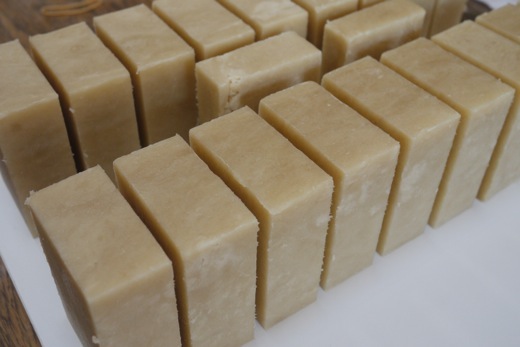
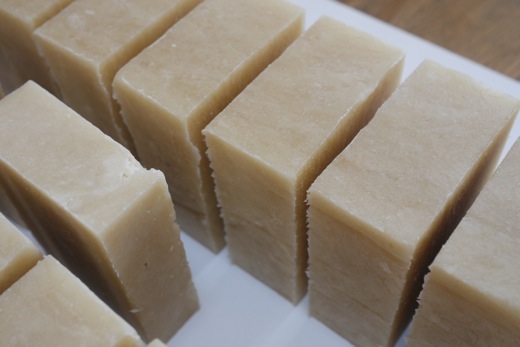 ———————————————————————————————-
———————————————————————————————-
Savonnerie Martin de Candre: http://savonnerie-martin-de-candre.com/fr/


